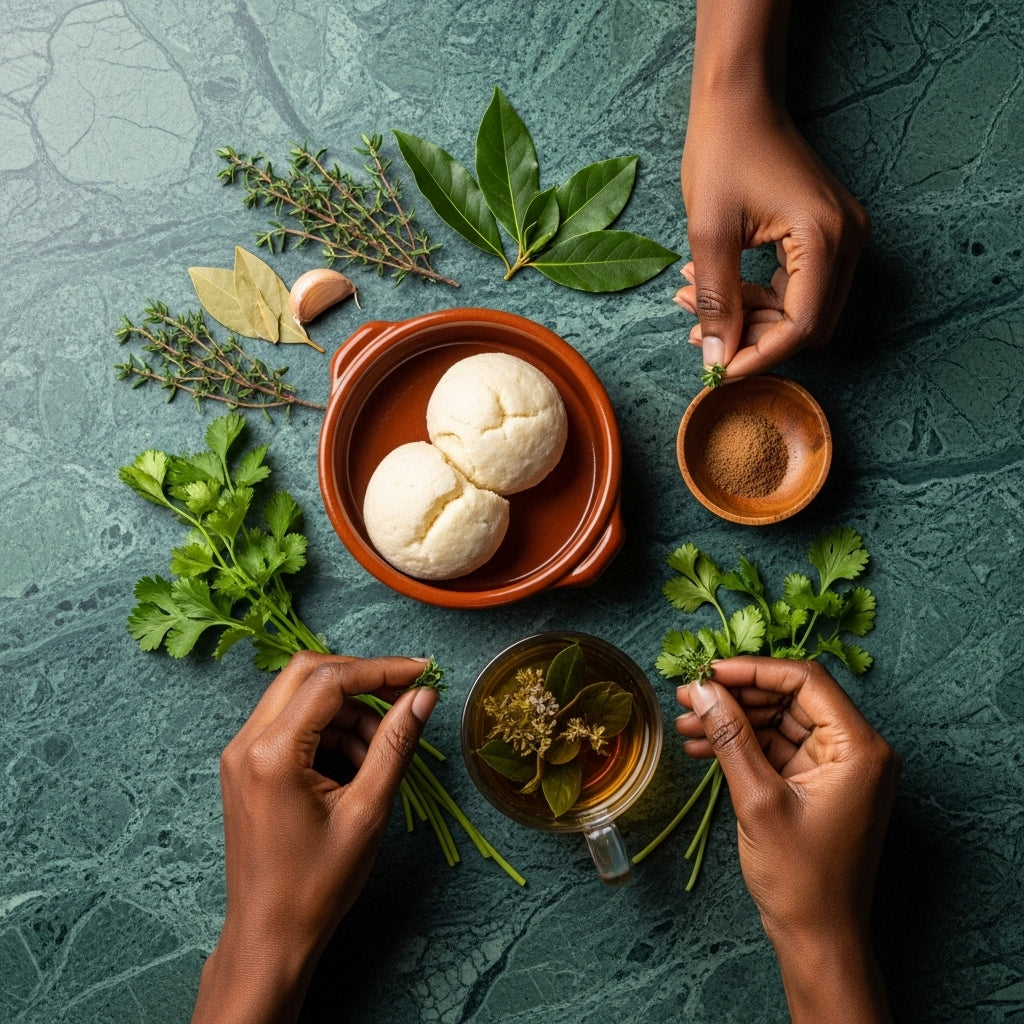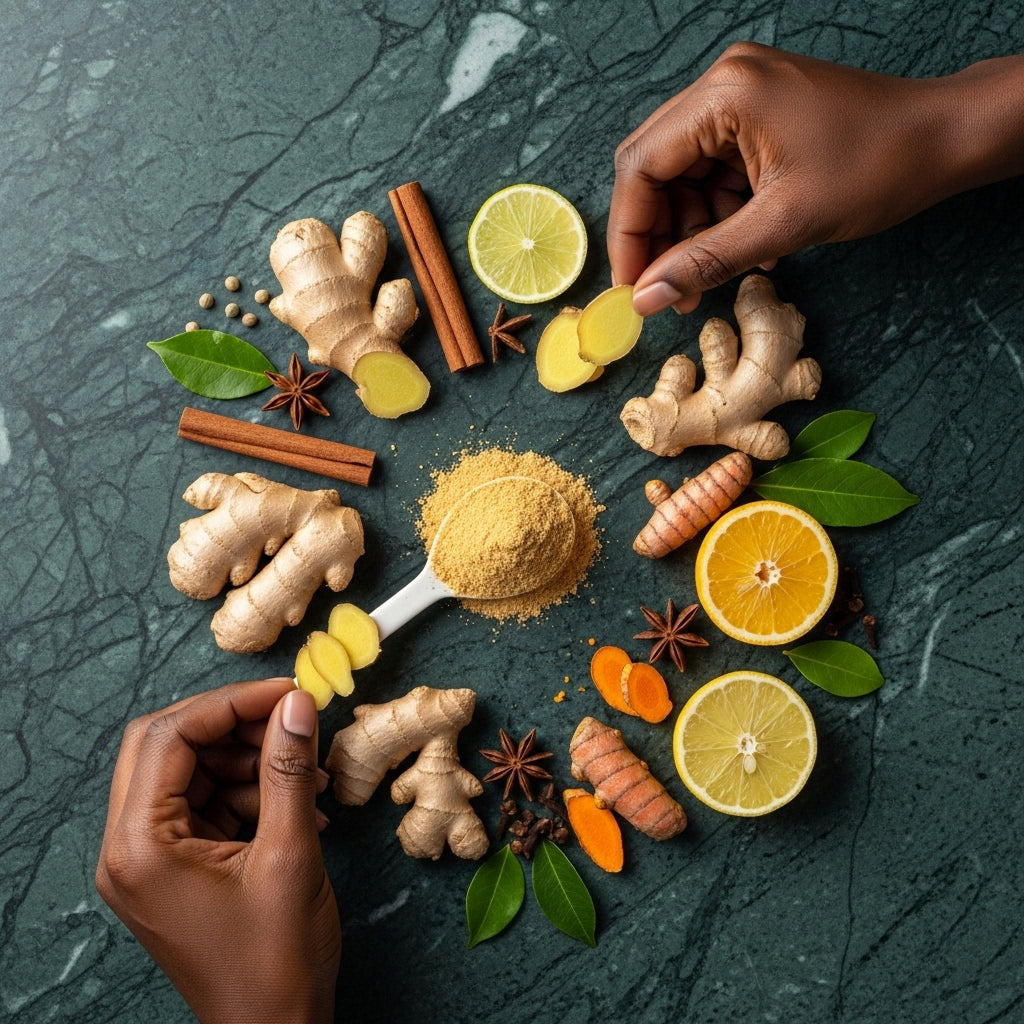Origin and preparation of Chikwangue
Chikwangue is a culinary specialty originating from the Democratic Republic of Congo. This specialty is primarily prepared from cassava, a starchy tuber. Preparing chikwangue requires time and patience. The cassava is first peeled, then grated and fermented. After this step, it is shaped into flatbreads or rolls before being steamed. This cooking technique helps retain its moisture and soft texture.
Accompaniment and flavor
Chikwangue is often served with saucy dishes, such as fish or meat. Its soft texture and neutral flavor make it a favorite with many Congolese people. It acts as a binding agent, balancing the richness of sauces and enhancing the flavors of main dishes. It is a staple food in many homes in the Democratic Republic of Congo.
Gatherings and celebrations
Traditionally, Chikwangue is shared at family gatherings and celebrations. Whether for a wedding, birthday, or religious holiday, it is often present on tables. Its preparation is sometimes collective, involving family members or friends, thus strengthening social ties. This accompaniment is more than just a food; it also represents Congolese culture and culinary traditions.
Ingredients and preparation of Chikwangue
Main ingredients
Chikwangue is primarily made from cassava, a starchy tuber. It is essential for the preparation of this traditional specialty. Cassava provides not only energy but also various vitamins and minerals, making it a staple food in Central Africa. In some regions, other ingredients may be added to enrich the recipe, but cassava remains the central ingredient.
Preparation of cassava
Preparing cassava for Chikwangue is a delicate process. First, the cassava is carefully peeled to remove the skin. Then, it is washed to remove impurities. After that, the cassava is grated or mashed to obtain a smooth paste. This step is crucial, as the texture of Chikwangue depends on the fineness of the resulting paste. Proper work at this stage guarantees a better final result.
Fermentation and cooking of cassava
Cassava dough is often left to ferment for a day or two. This fermentation allows Chikwangue to develop its distinct texture and flavor. The dough is then wrapped in banana leaves and steamed for several hours. This slow cooking allows the flavors to concentrate and the dough to become soft. Chikwangue is typically served with sauces, stews, or meat dishes, enriching each bite with delicious flavors.
Prepare your own chikwangue
Chikwangue is a traditional Central African side dish, primarily made from cassava, which is highly valued for its soft texture and light flavor. To make a delicious chikwangue recipe, it's important to start by thoroughly cooking the cassava. First, select fresh cassava tubers, then peel and chop them. Cook them in a large pot of boiling water for about 30 to 45 minutes, until tender. Once cooked, drain them and let them cool slightly.
Next, mash the cooked cassava using a pestle or blender to obtain a smooth paste.To flavor your chikwangue, you can add a pinch of salt or even a little palm oil, depending on your preference. Then transfer this paste to banana leaves, forming tight cylinders. Carefully wrap the cylinders with the leaves and tie them with kitchen string to prevent them from opening during cooking. This step is essential for a flavorful and well-formed chikwangue.
Finally, all that's left is to steam the chikwangue cylinders. Place them in a steamer basket and let them cook for about 45 minutes to an hour. The chikwangue is ready when its texture becomes firm and elastic. You can enjoy it hot, accompanied by various sauces or dishes with sauces, which makes it an excellent side dish. With this chikwangue recipe, you can enjoy a dish rich in flavors and traditions, while discovering the delights of cassava.
Nutritional value of Chikwangue
Rich in complex carbohydrates
Chikwangue is primarily composed of complex carbohydrates. These are a sustainable source of energy for the body. Unlike simple carbohydrates, they digest slowly. This helps maintain stable energy levels throughout the day. Consuming chikwangue therefore helps prevent blood sugar spikes.
Low in fat
Another characteristic of chikwangue is its low fat content. This makes it an ideal choice for those looking to maintain a balanced diet. By incorporating chikwangue into their diet, consumers can enjoy a nutritious dish without adding unwanted fat. It is ideal for those watching their weight.
Vitamin and mineral content
Chikwangue also contains essential vitamins and minerals. These nutrients are crucial for maintaining good health. They play an important role in strengthening the immune system and preventing disease. As a staple food, chikwangue contributes to the region's food security by providing a reliable source of nutrition for all ages.
Chikwangue in modern society
Growing popularity of Chikwangue beyond local borders
Chikwangue, traditionally consumed in the Democratic Republic of Congo, is enjoying growing popularity beyond its local borders. It is increasingly found in African restaurants around the world. The Congolese and African diasporas share their culinary culture, fostering the discovery of this unique specialty. Whether in Europe, America, or elsewhere, chikwangue attracts the curious and lovers of authentic cuisine.
Role of Chikwangue in social and cultural events
Chikwangue plays a central role in social and cultural events. At weddings, baptisms, and celebrations, it is often served as an accompaniment to main dishes. This specialty is more than just a food; it represents a tradition and an identity. The Congolese consider it a symbol of conviviality and hospitality. At gatherings, it unites people around the table, strengthening community bonds.
Dynamics of trade and gastronomy around Chikwangue
The chikwangue trade is booming. Many entrepreneurs are promoting this product in their offerings. nkosiagro.com We offer chikwangue for consumers looking for taste and authenticity. Fresh or vacuum-packed, we have what you need to experience this product in the best conditions. Restaurants, such as Africalicious, are incorporating chikwangue into their menus, highlighting its importance in African cuisine. This helps raise awareness of the nutritional benefits of chikwangue while supporting the local economy.
Conclusion: Chikwangue as a cultural symbol
Summary of the importance of Chikwangue in African culture
Chikwangue is much more than just a food in Central Africa. It embodies the culinary traditions of Congolese communities and those in other African countries that have side dishes similar in every way except appearance to Chikwangue, notably Cameroon's Bobolo. Its preparation requires time and commitment, making it a side dish often associated with moments shared with family or friends. As a staple food, it is respected for its nutritional value and its role in food security. Chikwangue is not only a symbol of the richness of African gastronomy, but also an expression of identity for many Congolese.
Call to promote and preserve culinary traditions such as Chikwangue
In a constantly changing world, it is crucial to promote culinary traditions like Chikwangue. Passing down recipes from generation to generation helps preserve cultural heritage. Families and communities must continue to teach young people how to prepare Chikwangue and other traditional side dishes. Supporting local markets and promoting natural African ingredients is also essential. Through these actions, we can preserve our identity while enriching our culinary culture.
Future prospects for Chikwangue in a globalized world
As globalization influences our eating habits, Chikwangue has the potential to make a name for itself on the international stage. Innovative chefs could incorporate this traditional specialty into contemporary recipes, making it more accessible to a wider audience. Culinary events and festivals dedicated to African gastronomy could also help promote Chikwangue beyond its borders. By leveraging its rich history and nutritional benefits, Chikwangue could become a symbol of African cuisine worldwide.
Frequently Asked Questions
What is the origin of Chikwangue and how is it prepared?
Chikwangue is a culinary specialty originating from the Democratic Republic of Congo, prepared from fermented cassava and steamed to obtain a soft texture.
How is Chikwangue usually served and what dishes is it often served with?
Chikwangue comes in the form of flatbreads or rolls, and is an ideal accompaniment to saucy dishes such as fish or meat.
What is the cultural importance of Chikwangue in Congolese gastronomy?
Chikwangue symbolizes conviviality and sharing during family gatherings and celebrations, strengthening family and friendship bonds in Congolese culture.
What are the main ingredients of Chikwangue and how is cassava prepared?
Chikwangue is made primarily from cassava, a starchy tuber. The cassava is peeled, washed, and then made into a smooth paste to make chikwangue.
What are the nutritional benefits of Chikwangue in terms of carbohydrates, fats, vitamins and minerals?
Chikwangue is rich in complex carbohydrates for sustained energy, low in fat, and contains essential vitamins and minerals for good health.
What is the trend in the popularity of Chikwangue beyond the Democratic Republic of Congo?
Chikwangue is gaining popularity beyond its local borders, particularly in African restaurants around the world, attracting curious visitors and lovers of authentic cuisine.
What role does Chikwangue play in social and cultural events, particularly in the Democratic Republic of Congo?
The Chikwangue is a central element of social and cultural events such as weddings, baptisms and festivals, symbolizing tradition, identity and conviviality in Congolese culture.
How are trade and gastronomy around Chikwangue evolving and contributing to its promotion?
The dynamics of trade around Chikwangue is growing with online offers and restaurants highlighting this specialty, thus highlighting the importance of African cuisine and supporting the local economy.
Important note: Although chikwangue is a highly nutritious food, it is important to consume it in moderation as part of a balanced diet. Like any starchy food, it can contribute to weight gain if consumed in excess.
Your Culinary Journey 🧡

